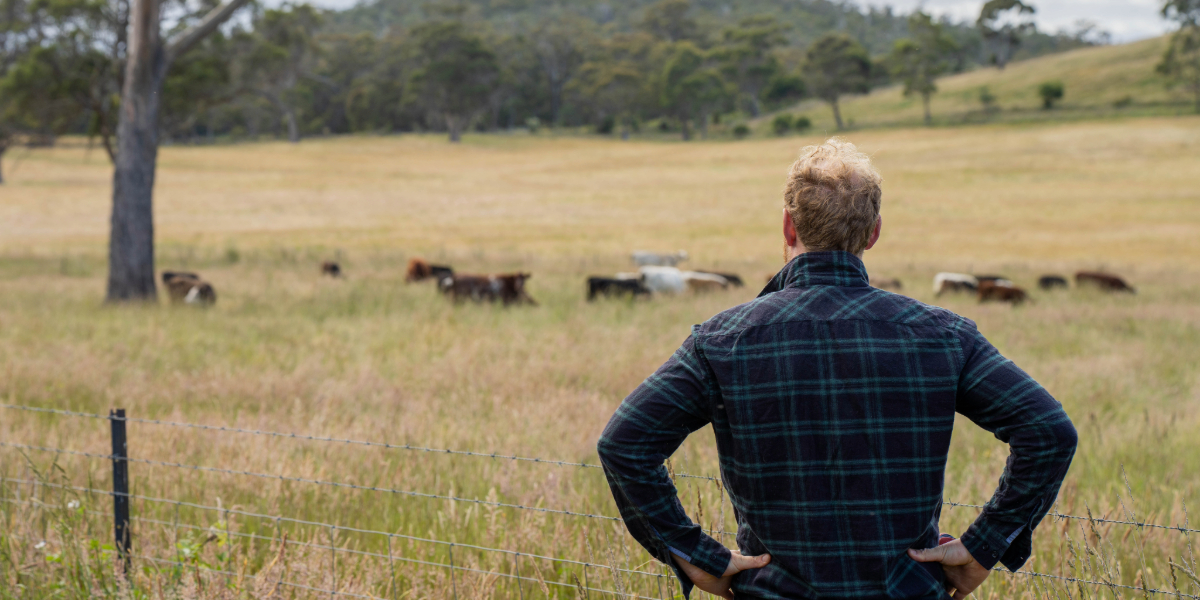New South Wales recorded more farm fatalities than any other state in 2024, with 19 lives lost, as part of a nationwide surge in on-farm deaths detailed in the 2025 Safer Farms Report released today.
The report, launched alongside this week’s National Farm Safety Week campaign, reveals a disturbing reversal in safety progress, with 72 people killed on Australian farms last year — more than double the figure from 2023.
The national safety campaign, led by Farmsafe Australia, is urging farmers and their workers to learn from near misses and take proactive steps to reduce risk on-farm. The theme, ‘Second Chances – Who Knows How Many You’ll Get?’, focuses on the importance of recognising and responding to the everyday close calls that often go unspoken.
Chair of Farmsafe Australia, Felicity Richards, said the goal of the campaign was to create a shift in culture around risk, responsibility and reflection.
“So many incidents are preceded by a ‘close call’. A moment when we got lucky. But unless we talk about what almost happened and what we did differently afterwards, we’re missing one of the most powerful tools we have to change behaviour,” Ms Richards said.
The 2025 Safer Farms Report, sponsored by WFI Insurance, paints a sobering picture of the risks still faced by those who live and work on the land:
• NSW led the nation in fatalities with 19 deaths, followed by Queensland (18), Victoria (10), Western Australia (5), South Australia (2), Tasmania (2), and the Northern Territory (1).
• Side-by-side vehicles (SSVs) overtook quads and tractors as the leading cause of on-farm deaths for the first time.
• 87.5 per cent of fatalities were male, and over 63 per cent were aged 45 or older.
• Children under 15 were involved in 11 per cent of fatal incidents.
• Fatigue, complacency, time pressure, and poor communication remain top contributing factors to incidents.
Minister for Agriculture Julie Collins said the Albanese Government had committed $2.5 million over three years to support Farmsafe Australia’s work.
“Agriculture, fisheries and forestry have the highest rate of workplace fatalities per worker compared to any other industry in Australia,” Ms Collins said.
“These are not just numbers. It’s someone’s parent, partner or child who never came home. This Farm Safety Week, I encourage all farmers and their workers to take a moment to reflect, make safety a priority, and take simple steps to protect themselves and those around them.”
The report also notes that while fatality numbers spiked, serious injuries — including amputations, fractures, and hospitalisations — have remained stubbornly high over the past decade, with more than 130 severe incidents recorded in 2024 alone. There is also an increasing emphasis on mental health on farm as critically important to preventing physical accidents.
WFI Executive General Manager Damien Gallagher said many incidents stemmed from preventable causes such as fatigue, poor maintenance and safety shortcuts.
“We see the life-changing impacts of farming incidents and know not everyone gets a second chance,” he said.
This year’s campaign encourages safe storytelling — sharing near misses in a way that helps others learn and adapt. Stories from farmers across the country illustrate how small decisions, rushed jobs or overlooked safety procedures nearly ended in tragedy but instead served as turning points.
Ms Richards said creating space to talk about these moments without shame is key to preventing future harm.
“When we share a near miss safely, without blame and with a focus on the lesson, we create space for someone else to say, ‘Actually, that happened to me too’. That conversation can lead to real action.”
For more information, resources, and tools to improve farm safety, visit farmsafe.org.au.
Don’t miss any of the important stories from around the region. Subscribe to our email list.

